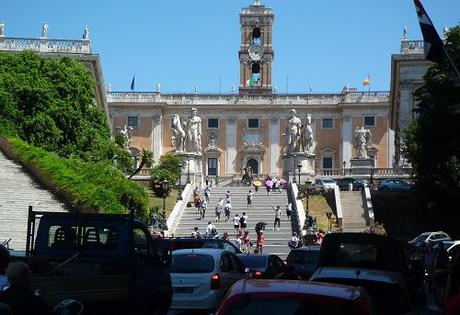
You might have never heard of the Temple of Jupiter Optimus Maximus, but it is actually a pretty important part of Roman history – particularly when it comes to the Roman authorities. The monument was originally used as a place for politicians to worship the slew of Roman gods and offer up sacrifices to a cult statue of Jupiter.
On top of that, it also functioned as a conference centre, a fellowshipping hall, a public records archive, and the finishing point for Roman triumph processions. As you can see from this list of duties alone, it has held prominent status in the city for thousands of years.
The temple itself sits in the heart of the Area Capitolina and has been rebuilt no less than four times. It’s constant “rebirth” highlights how important a religious, political, a cultural symbol it is.
The original construction of the temple was the oldest large temple in Rome and was built in the Etruscan architectural style in 509 BC. However, it was later burnt to the ground in a fire before it was rebuilt in a Greek style in 69 BC and then burnt down again two more times.
Today, visitors can see some of the temple podium and early foundations behind the Palazzo dei Conservatori as part of an exhibition in the Caffarelli Garden. A section of the front corner can also be seen in via del Tempio di Giove.
The Area Around the Temple
It’s not just the temple itself that forms an important part of Roman history. The area surrounding the temple is thought to hold religious, cultural, and political prominence too. Known as Area Capitolina, this precinct was expanded in 388 BC to cover around 3,000 metres squared.
The area was home to the sacred geese of Juno, which are thought to have sounded the alarm during the Gallic siege of Rome. There are also underground chambers here known locally as favissae that were home to old votive offerings, objects not fit for exhibition, and building materials that were no use or damaged.
Area Capitolina is best-known for its collection of shrines, altars, victory trophies, and statues, many of which can still be seen today. Later, it formed an important market for luxury goods, an industry that continued to thrive in the precinct well into the medieval period.
Though it might not be one of Rome’s most famous areas, Area Capitolina and its accompanying remains of the Temple of Jupiter Optimus Maximus forms an important part of the city’s lengthy and fascinating cultural, religious, and political history.
Check out our Pompeii Tours https://www.pompeiitours.it/ today!
Advertisements
